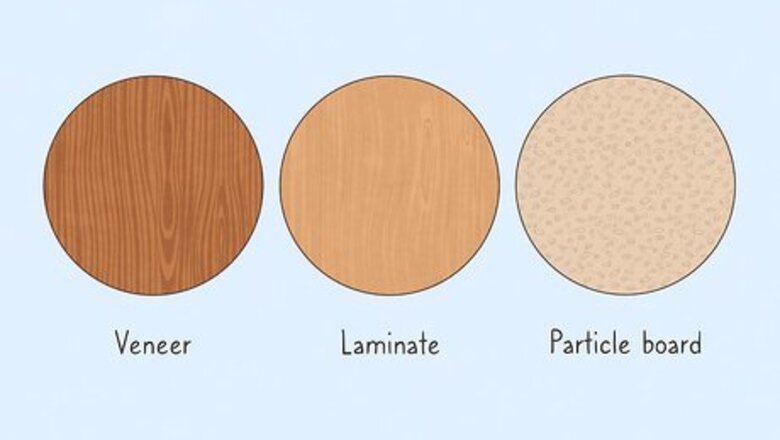
views
Stripping the Desk
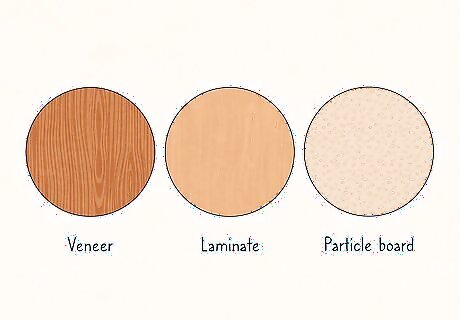
Verify the desk can be refinished. Before taking any action to refinish a desk, you need know the original finish of the desk. This is important, as there are some finishes and types of wood that you may not be able to refinish. Veneer cannot be refinished. To fix a veneered desk, you'll have to remove the veneer and apply new veneer. However, depending on the wood below the veneer, you may be able to remove the veneer and rehabilitate the wood. Laminate desks cannot be refinished. Particle board desks cannot be refinished. They are best painted.
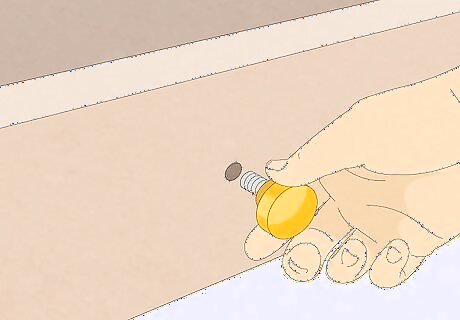
Remove the hardware. Once you've verified that your desk can be refinished, you need to remove all the hardware from it. Unscrew knobs, handles, hinges, and any other hardware. If you leave any hardware on, you won't be able to properly refinish the desk. Put your hardware (screws and all) in plastic baggies so they don't get lost. If you have a lot of hardware, put them in separate baggies and label them so you know exactly where to put them when you reassemble the desk.
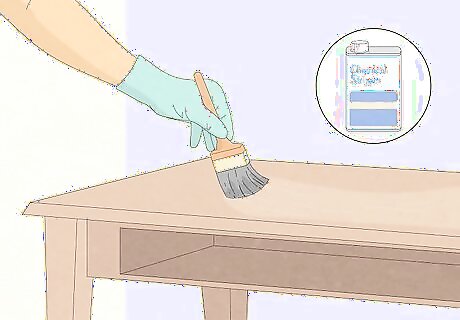
Apply a chemical stripper. Chemical strippers will help remove varnish, stain, or paint and make the sanding process a whole lot easier. When applying the stripper, do one section at a time (avoid stripping the whole desk). Use a liberal amount of stripper and don't mess with it after application. Allow the stripper to sit for as long as the directions on the product indicate. Use a stripper that you can wash away with water. Open windows, doors, and turn on the air conditioning if you're doing this inside. Acetone is a good option for removing paint or varnish, although you can use other commercial stripping products as well.
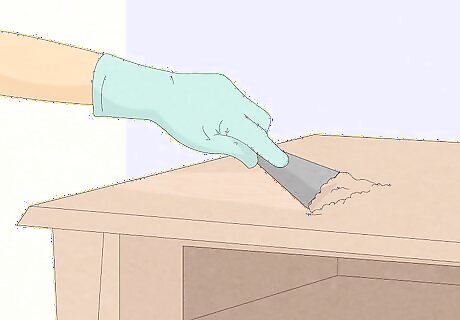
Use a putty knife to remove the stripper and varnish. After you've let the stripper do its job, take a putty knife and gently remove the stripper, varnish, stain, or paint. To do this, gently scrape the surface of the desk in a systematic fashion. Remove as much as you can. Don't apply too much pressure – you could gouge the wood.
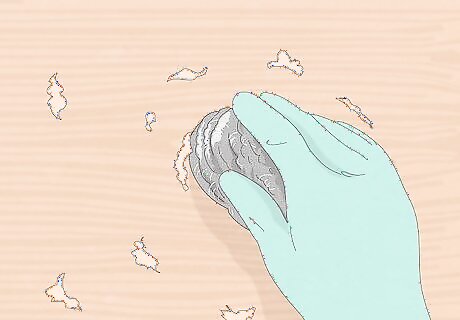
Use steel wool to remove any residual stripper or varnish. Scrub the entire surface of the desk. Pay attention to hard-to-reach areas. Don't apply too much pressure – you could damage the wood. If you find that varnish, stain, or paint remains, you may need to apply stripper to the wood again.
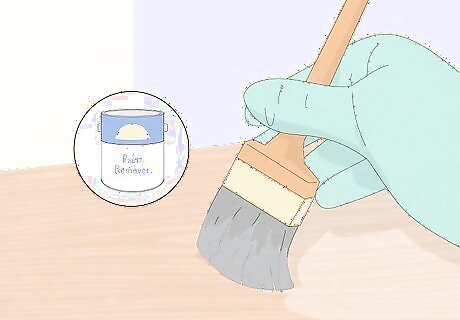
Apply paint remover, turpentine, or another similar chemical. Depending on the specific stripper you used, its directions may suggest you use another chemical agent to remove any residual stripper. Follow the directions and apply the chemical agent over the entire surface of the desk. Some products simply require that the wood be wiped down with a damp cloth.
Sanding, Sealing, and Filling
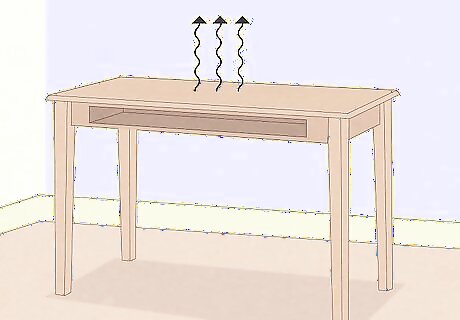
Allow the desk to dry. After you've completed the process of removing stain, varnish, or paint, allow the desk to sit overnight and dry. Without allowing it to dry, you won't be able to move on to the next step in refinishing your desk.
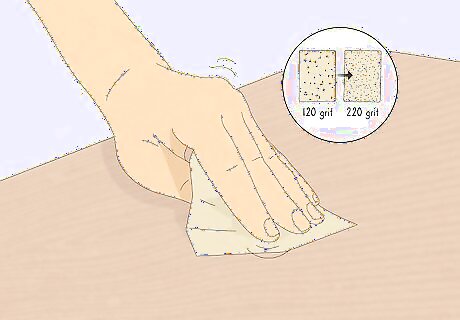
Sand the wood. Purchase a 120-grit piece of sand paper and rub down the entire surface of the desk. Sand until the entire surface is smooth and the previous color is completely gone. After it is smooth, use a 220-grit piece of paper and sand the desk again. Always sand with the grain of the wood. Pay attention to corners and hard-to-reach areas of the desk. Sand any rotten or broken spots off until you reach smooth, healthy, wood.
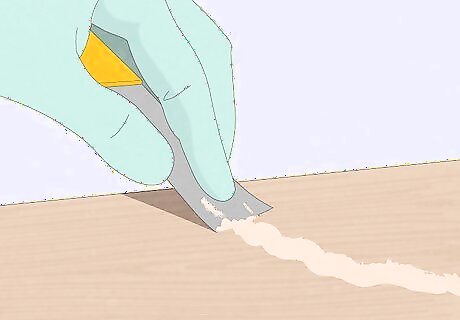
Fill in rotten or broken pieces. Use wood filler or epoxy to replace any pieces of the desk that have broken or rotted off. Use a putty knife to apply filler to the area in question. Shape it with the knife, toothpicks, or any other tool that might come in handy. Allow the area to dry before moving on.
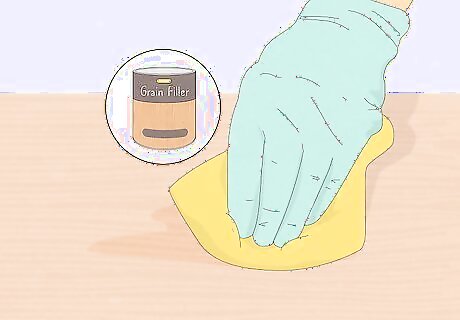
Apply grain filler, if needed. If your desk is made of a wood that has an open grain structure – like oak and mahogany – you may have to fill the grain to make the piece completely smooth. To apply the filler, take a rag, dab some filler on it, and rub it into the open grain of the wood. After application, remove any extra filler with a putty knife or another flat object. Let the grain filler dry completely before moving on. If you want to emphasize the grain of the wood, choose a filler that contrasts with its main color. If you want to obscure the grain, pick a color that is similar to the color of the wood.
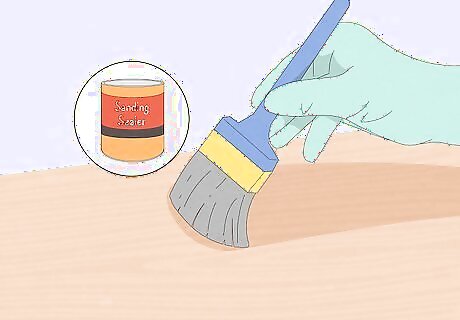
Use a sanding sealer. With a paint brush, apply a liberal amount of sanding sealer to the entire surface of the desk. Let it soak in, and then remove any remaining sealer with a cloth. Let the sealer dry before you continue.
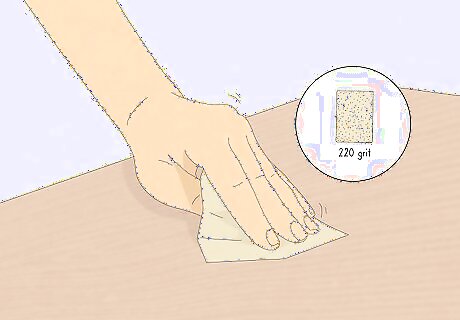
Sand the desk again. After applying the sanding sealer, take a 220-grit piece of sandpaper and sand the wood again. This will sand off any wood fibers that protrude from the surface of the desk and any sealer that remains.
Staining and Finishing the Desk
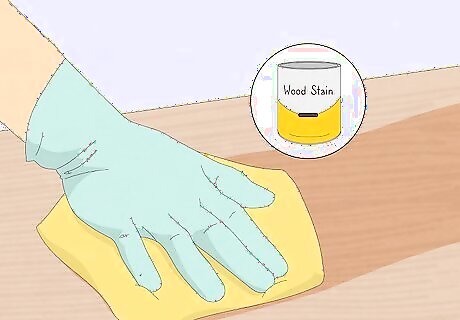
Apply liquid stain with a clean rag. Use enough so the stain can soak in and penetrate the surface. Remember, the more stain you use, the darker your wood will appear. After application, wipe off remaining stain with another cloth. Then, allow it to sit. If you want your desk to appear darker, apply more stain. Depending on the wood, you may need to sand the desk again. This is because the staining process may force wood fibers upward and create a rougher surface.
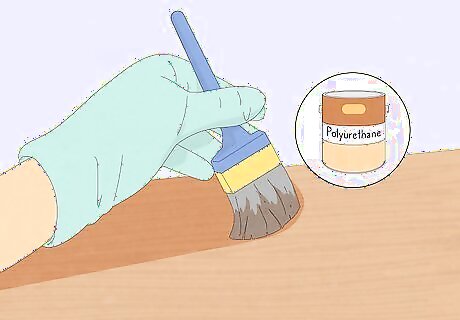
Apply a finish. You can choose between different types of polyurethane, lacquer, or oil finishing products. To apply most finishing products, like polyurethane, stir or shake the product well, then apply it with a brush or clean cloth. When using polyurethane, stir the product very well and to allow time for bubbles to dissipate before applying it. If you choose to use polyurethane, don't use too much. Only apply a little at a time, otherwise you could cause a running or wrinkling effect. A water-based satin varnish will make it easy to clean the furniture once it's dry. While you can apply lacquer with a clean cloth, you may want to consider spraying it on.
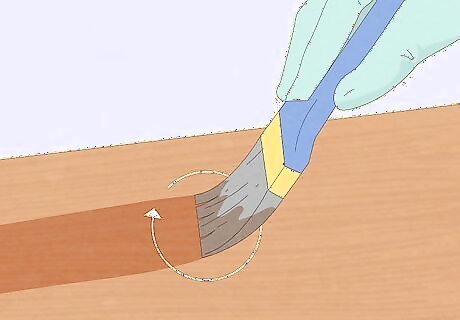
Reapply your finish. Some finishes, like polyurethane, need to be reapplied several times. To apply polyurethane correctly, sand between every coat. Use a 200-grit paper to sand between your polyurethane coats. Reapply polyurethane between two and three times.













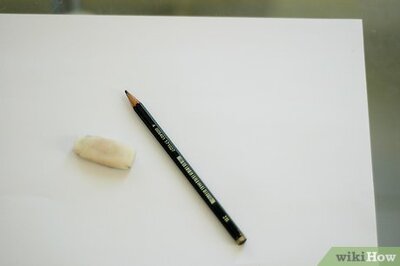
Comments
0 comment